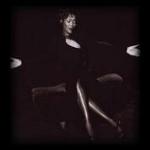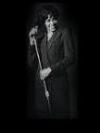 |
 |
 |
 |
 |
 |
Celebrating an Anthem's Creation Associated Press: A New York City firefighter rests in front of a flag on Friday, Sept. 14, 2001 Sunday, September 16, 2001 By Roger Friedman Celebrating an Anthem's Creation by an American Hero We almost missed it. Friday was the birthday of "The Star-Spangled Banner." Francis Scott Key, a Washington lawyer who lived in Georgetown, wrote would become our national anthem during the second year of the War of 1812. It seems only appropriate to remember this weekend that there was a time when the White House was successfully attacked (by the British, no less) and that the country survived and prospered. Key's composition has proven over the years to be a difficult one to perform. It often shows the true range and abilities of a popular singer to pull it off correctly. Whitney Houston is the only performer in history to have a hit single with it. She took it up the charts back in 1991 when she sang it at the Super Bowl right in the middle of the Gulf War. The song was such a hit that Arista Records was able to donate a half million dollars to the American Red Cross from its profits. Herewith, a history of Key, the anthem, and a short lesson on the War of 1812: Francis Scott Key was a respected young lawyer living in Georgetown just west of where the modern day Key Bridge crosses the Potomac River (his house was torn down after years of neglect in 1947). He made his home there from 1804 to around 1833 with his wife Mary and their six sons and five daughters. At the time, Georgetown was a thriving town of 5,000 people just a few miles from the Capitol, the White House, and the Federal buildings of Washington. But, after war broke out in 1812 over Britain's attempts to regulate American shipping and other activities while Britain was at war with France, all was not tranquil in Georgetown. The British had entered Chesapeake Bay on August 19th, 1814, and by the evening of the 24th of August, the British had invaded and captured Washington. They set fire to the Capitol and the White House, the flames visible 40 miles away in Baltimore. President James Madison, his wife Dolly, and his Cabinet had already fled to a safer location. Such was their haste to leave that they had had to rip the Stuart portrait of George Washington from the walls without its frame! A thunderstorm at dawn kept the fires from spreading. The next day more buildings were burned and again a thunderstorm dampened the fires. Having done their work the British troops returned to their ships in and around the Chesapeake Bay. In the days following the attack on Washington, the American forces prepared for the assault on Baltimore (population 40,000) that they knew would come by both land and sea. Word soon reached Francis Scott Key that the British had carried off an elderly and much loved town physician of Upper Marlboro, Dr. William Beanes, and was being held on the British flagship Tonnant. The townsfolk feared that Dr. Beanes would be hanged and asked Key for his help. He agreed and arranged to have Col. John Skinner, an American agent for prisoner exchange to accompany him. On the morning of September 3rd, he and Col. Skinner set sail from Baltimore aboard a sloop flying a flag of truce approved by President Madison. A few days later they boarded the Tonnant to confer with officers there, who at first refused to release Dr. Beanes. But Key and Skinner produced a pouch of letters written by wounded British prisoners praising the care they were receiving from the Americans, among them Dr. Beanes. The British officers eventually relented. Now let's go back to the summer of 1813 for a moment. At the star-shaped Fort McHenry, the commander, Maj. George Armistead, asked for a flag so big that "the British would have no trouble seeing it from a distance." Two officers were sent to the Baltimore home of Mary Young Pickersgill, a "maker of colors," and commissioned the flag. Mary and her thirteen year old daughter Caroline, working in an upstairs front bedroom, used 400 yards of best quality wool bunting. They cut 15 stars that measured two feet from point to point. Eight red and seven white stripes, each two feet wide, were cut. Laying out the material on the malthouse floor of Claggett's Brewery, a neighborhood establishment, the flag was sewn together. By August it was finished. It measured 30 by 42 feet and cost $405.90. The Baltimore Flag House, a museum, now occupies her premises, which were restored in 1953. At 7 a.m. on the morning of September 13, 1814, the British bombardment began, and the flag was ready to meet the enemy. The bombardment continued for 25 hours, the British firing 1,500 bombshells that weighed as much as 220 pounds and carried lighted fuses that would supposedly cause it to explode when it reached its target. But they weren't very dependable and often blew up in mid air. The Americans had sunk 22 vessels so a close approach by the British was not possible. But at about 1 a.m. on the 14th, the British fleet roared to life, lighting the rainy night sky with grotesque fireworks. Key, Col. Skinner, and Dr. Beanes watched the battle with apprehension. They knew that as long as the shelling continued, Fort McHenry had not surrendered. But, before daylight there came a sudden and mysterious silence. What the three Americans did not know was that the British land assault on Baltimore as well as the naval attack, had been abandoned. Judging Baltimore as being too costly a prize, the British officers ordered a retreat. Waiting in the predawn darkness, Key waited for the sight that would end his anxiety; the joyous sight of the great flag blowing in the breeze. When at last daylight came, the flag was still there! Being an amateur poet and having been so uniquely inspired, Key began to write on the back of a letter he had in his pocket. Sailing back to Baltimore he composed more lines and in his lodgings at the Indian Queen Hotel he finished the poem Joseph H. Nicholson, his brother-in-law, took it to a printer and copies were circulated around Baltimore under the title "Defense of Fort M'Henry." Two of these copies survive. It was printed in a newspaper for the first time in the Baltimore Patriot on September 20th,1814, then in papers as far away as Georgia and New Hampshire. In October a Baltimore actor sang Key's new song in a public performance and called it "The Star-Spangled Banner". Immediately popular, it remained just one of several patriotic airs until it was finally adopted as our national anthem on March 3, 1931. But the actual words were not included in the legal documents. Key himself had written several versions with slight variations so discrepancies in the exact wording still occur. The flag, our beloved Star-Spangled Banner, went on view, for the first time after flying over Fort McHenry, on January 1st,1876 at the Old State House in Philadelphia for the nations' Centennial celebration. It now resides in the Smithsonian Institution's Museum of American History. An opaque curtain shields the now fragile flag from light and dust. The flag is exposed for viewing for a few moments once every hour during museum hours. Francis Scott Key was a witness to the last enemy fire to fall on Fort McHenry. The Fort was designed by a Frenchman named Jean Foncin and was named for then Secretary of war James McHenry. Fort McHenry holds the unique designation of national monument and historic shrine. Since May 30th, 1949 the flag has flown continuously, by a Joint Resolution of Congress, over the monument marking the site of Francis Scott Key's birthplace, Terra Rubra Farm, Carroll County, Keymar, Maryland. The copy that Key wrote in his hotel September 14,1814, remained in the Nicholson family for 93 years. In 1907 it was sold to Henry Walters of Baltimore. In 1934 it was bought at auction in New York from the Walters estate by the Walters Art Gallery, Baltimore for $26,400. The Walters Gallery in 1953 sold the manuscript to the Maryland Historical Society for the same price. Another copy that Key made is in the Library of Congress. NEWSFILE: 16 SEPTEMBER 2001 |
© 1996 - 2001 Manish
www.classicwhitney.com -
Disclaimer.